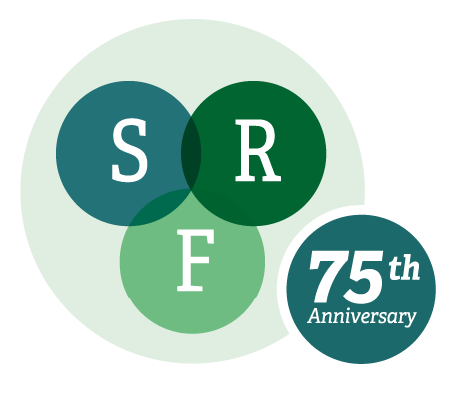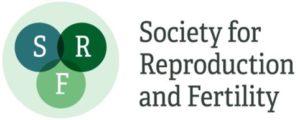Former positions:. Jim Joel Professor of Equine Reproduction, University of Cambridge and Director, The Thoroughbred Breeders’ Association Equine Fertility Unit, Mertoun Paddocks, Newmarket, Suffolk
SYNOPSIS OF CAREER
Veterinary graduate from the University of Sydney, January, 1965.
PhD degree, University of Cambridge 1966-1970. Supervisor Dr Roger Short. Title of thesis; “Pregnant Mare Serum Gonadtrophin”.
Post-doctoral Fellowship at The Animal Research Station, Huntingdon Road, Cambridge. 1970-1972. Supervisor Mr L.E.A. (Tim) Rowson FRS Senior Research Scientist, TBA Equine Fertility Unit, The Animal Research Station, Cambridge 1972-1988. Supervisor Professor T.R.R. Mann FRS Director, TBA Equine Fertility Unit, Mertoun Paddocks, Woodditton Road, Newmarket, Suffolk, 1988-2007.
Appointed Jim Joel Professor of Equine Reproduction at the University of Cambridge, 1996.
Retired aged 67 years in December, 2007.
Honorary Director, The Paul Mellon Laboratory of Equine Reproduction, “Brunswick”, Woodditton Road, Newmarket, Suffolk. 2008-2015.
Director, The Equine Reproduction Laboratory, Sharjah Equine Hospital, Sharjah, U.A.E. 2015 to the present.
CAREER HIGHLIGHTS
1) The great good fortune to “sneak my way by accident” into Roger Short’s laboratory in Cambridge and be able to do a PhD on equine reproduction under his inspiring supervision.
2) The equal good fortune to post-doc at the Animal Research Station in Cambridge, a veritable Animal reproduction scientific powerhouse, under the supervision and tutelage of Tim Rowson.
There to carry out the first embryo transfers in horses and donkeys with Tim and to discover when collaborating with Dr Bob Moor FRS that the chorionic girdle portion of the fetal membranes is the progenitor tissue of the unique equine endometrial cups in the pregnant mare and is therefore the source of the equine-unique protein hormone, equine Chorionic Gonadotrophin (eCG), which is present in large quantities in the blood of early pregnant mares and other equids (Days 40-120 of gestation) and which stimulates the development of secondary or accessory corpora lutea in the mare’s ovaries to maintain the pregnancy state until the diffuse epitheliochorial placenta is sufficiently well established to assume the role of progesterone supplier.
3) Again with Tim Rowson, the development and practical application of both surgical and non-surgical methods of embryo recovery and transfer in the mare and, with Franseca Stewart and Alan Trownson, the successful transport of 6 horse embryos in the oviducts of two rabbits by car to Krakow in Poland in 1974 for transfer to recipient mares there with the birth of 3 live foals in 1975, all in close and enjoyable collaboration with Wadslaw Bielanski and Marian Tischner of The Institute of Animal Physiology in Krakow.
4) The organisation and successful running of the First International Symposium of Equine Reproduction in Cambridge in July, 1974.
5) The successful trialling and practical application of the reproductive hormones, prostaglandin F analogues (Equimate and Estrumate), allyl trenbolone (Regumate) and Gonadotrophin-releasing hormone (GnRH) analogues (Deslorelin) to practical horse breeding, all with the collaborative assistance of the studfarm veterinary practitioners in Newmarket, notably Peter Rossdale, Bob Crowhurst, Donald Simpson, Richard Greenwood and David Ellis.
6) The successful bisection and reconstruction of horse embryos to create a number of pairs of genetically identical twin foals, all in collaboration with Steen Willadsen, Robert Pashen and Lulu Skidmore.
7) The early development and practical application of the technique of transrectal ultrasonography to Thoroughbred horse breeding for the accurate visual assessment of follicular growth, ovulation and corpus luteum development and for the early accurate diagnosis of singleton and twin pregnancy and early pregnancy failure. This work was also carried out in collaboration with the Newmarket veterinary practitioners and the technique of scanning has since revolutionised horse breeding throughout the world.
8) Development with Dr Julia Kydd of the extraspecies donkey-in-horse model of early pregnancy loss as a consequence of failure of implantation and placentation resulting from the failure of the donkey chorionic girdle to invade the horse endometrium to form endometrial cups.
9) The creation by between-breed embryo transfer of “deprived” Thoroughbred-in-Pony and “luxurious” Pony-in-Thoroughbred pregnancies to study the influences of maternal and placental size on the development of the foal.
10) Determination that blockage of the oviducts in mares can be a cause of infertility which can be simply overcome by the laparoscopic application of PGE2 gel to the external surface of the oviduct.
11) Other career highlights include gaining a Fellowship of The Royal College of Veterinary Surgeons (FRCVS) by thesis, election to the Polish Academy of Sciences, the award of Honorary Doctorates from the Universities of Krakow, Gent and Helsinki and election to the Hall of Fame for Equine Research in America and a Lifetime Achievement Award from the International Symposia of Equine Reproduction Committee.
VALUE OF SRF MEMBERSHIP
One of the great pleasures of my academic career has been membership of SRF (originally SSF) Since my PhD days. It is friendly and warm, yet structured and formal when necessary, and it provides the perfect platform for reproductive biology researchers to present their results and to learn and be able to discuss, formally and informally, the findings of others. I have met and remained good friends with many colleagues from attending SRF meetings over the past 50 years and I am deeply grateful to the society for both its scientific stimulation and its friendship.


Recent Comments